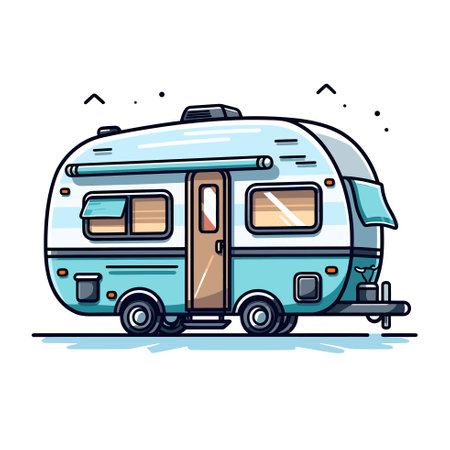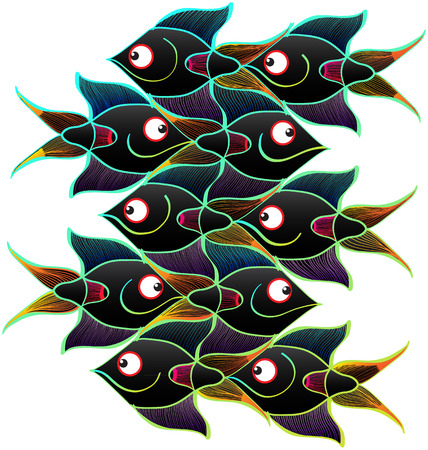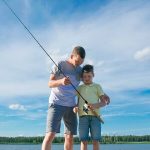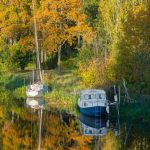1. Choosing the Right Kayak and Gear
When planning a kayak fishing adventure with overnight camping, the first step is picking the right kayak and gear. Not all kayaks are created equal—especially when you’re combining fishing with overnight stays in the great outdoors. You’ll need a boat that’s stable, has enough storage, and is comfortable for long hours on the water.
Best Types of Kayaks for Fishing and Camping
There are two main types of kayaks that work well for these kinds of trips: sit-on-top kayaks and touring kayaks. Here’s a quick breakdown:
| Type | Pros | Cons |
|---|---|---|
| Sit-on-Top Kayak | Stable, easy to get in and out of, great for fishing access | Less protection from weather, slower than touring kayaks |
| Touring Kayak (Sit-In) | Better tracking and speed, more storage space, protection from elements | Can be harder to re-enter if you capsize, less deck space for gear |
Essential Gear for Long Kayak Trips
You’ll want to pack smart to keep things light but fully prepared. Here’s a list of must-have gear tailored for kayak fishing trips with overnight camping:
- Paddle: A lightweight yet durable paddle is key. Carbon fiber paddles reduce fatigue over long distances.
- PFD (Personal Flotation Device): Always wear a Coast Guard-approved life vest designed for paddling and fishing—it should have pockets for easy access to tools.
- Rod Holders: Look for adjustable rod holders or flush-mount styles that don’t get in your way while paddling.
- Dry Bags: Keep your clothes, electronics, and food dry with waterproof storage options.
- Tackle Storage: Use compact tackle boxes or soft-sided bags that fit easily into your kayaks compartments.
- Anchor System: An anchor trolley system can help you stay in place when casting or setting up camp near shore.
- Camping Gear: Choose compact items like a lightweight tent, sleeping bag, and portable stove that fit into dry hatches or strapped on deck.
Packing Tip
Distribute weight evenly across your kayak to maintain balance. Store heavier items low and centered to avoid tipping.
Quick Checklist Before You Launch
- Is your kayak suited for both fishing and carrying overnight gear?
- Do you have a reliable paddle and backup?
- Are all essentials packed in waterproof containers?
- Have you tested your setup on a short trip before going longer?
Selecting the right kayak and gear sets the tone for an enjoyable and safe multi-day trip. With some planning and the right equipment, youll be ready to fish remote waters and camp under the stars without a hitch.
2. Fishing Techniques for Kayak Anglers
When youre out on a kayak fishing adventure, especially one that includes overnight camping, mastering a few key techniques can make your trip more successful and enjoyable. Unlike fishing from a boat or the shore, kayak fishing requires you to manage your gear and movements in a much smaller space — all while staying balanced on the water. Here are some essential techniques every kayak angler should know.
Casting from a Kayak
Casting from a seated position takes some getting used to. Since kayaks sit low to the water, you wont have the same leverage as you would standing on shore or in a bass boat. Try these tips:
- Use shorter rods: A 6’6” to 7’ rod is easier to handle in tight quarters.
- Practice sidearm or underhand casts: These casting styles help avoid hitting the water or your kayak.
- Anchor up or use a stakeout pole: Staying still helps with accuracy and control.
Trolling While Paddling
Trolling is a great way to cover water while moving between spots. It’s simple to set up and can be very effective for catching species like trout, walleye, and bass.
| Trolling Setup | Tips for Success |
|---|---|
| Rod Holder Placement | Mount holders within easy reach but out of the paddle stroke path. |
| Lure Selection | Use crankbaits or spinners that dive at your paddling depth. |
| Paddle Speed | Maintain a slow, steady pace — most lures perform best at 1-2 mph. |
| Line Management | Let out enough line (50-100 ft) so your lure reaches optimal depth. |
Handling Fish in Tight Spaces
Landing a fish in a kayak can be tricky due to limited space and movement. Heres how to do it safely and efficiently:
- Use a landing net: A rubber mesh net is gentle on fish and helps avoid tangles.
- Keep pliers handy: Store them on a tether so you can quickly remove hooks.
- Kneel or center yourself: To maintain balance when reeling in bigger fish, shift your weight toward the center of the kayak.
- Plan for catch and release: If releasing, minimize handling time and keep fish wet as much as possible.
Staying Balanced While Fishing
Your stability on the water depends on both your kayak design and how you move. Always stay aware of your body positioning:
- Sit low when possible: Lowering your center of gravity improves balance.
- Avoid sudden movements: Shift slowly when reaching for gear or turning around.
- Practice before your trip: Get comfortable casting, reeling, and moving in calm waters before heading into remote areas for an overnight adventure.
Packing Tip:
If youre planning an overnight trip, store heavier items low and centered in your kayak to help with balance during fishing sessions.
The better you understand these kayak-specific fishing techniques, the more confident youll feel out on the water — whether youre chasing bass at dawn or casting lines under the stars at your campsite.

3. Planning Your Route and Understanding Local Waters
If youre gearing up for an overnight kayak fishing adventure in the U.S., planning your route is just as important as picking the right gear. Knowing where youre going, what the water conditions are like, and the local fishing regulations can make or break your trip. Heres how to get started:
Map Out Your Kayak Fishing Location
Before you hit the water, take some time to map out your route. Use tools like Google Maps, Navionics, or Fishbrain to scout launch points, fishing hotspots, and potential overnight camping sites. Be sure to look at satellite views for shoreline access and shallow areas. Consider paddling distances too—kayaking with gear is more tiring than a casual paddle.
Helpful Mapping Tools
| Tool | Use |
|---|---|
| Google Maps | Find access points and terrain |
| Navionics | Nautical charts, depth info |
| Fishbrain | User-shared fishing spots & species data |
Check Local Regulations
The U.S. has a patchwork of state and federal rules when it comes to fishing. Always check for licenses, bag limits, and specific rules for the body of water you’ll be on. Some lakes or coastal areas may have no-fishing zones or restricted species.
Where to Check Fishing Regulations:
- Your state’s Department of Natural Resources (DNR) website
- The U.S. Fish & Wildlife Service site
- Tackle shops or local marinas often have printed guides
Understand Fishing Seasons
Certain fish are only legal to catch during specific seasons depending on your location. Knowing the open season for your target species helps avoid fines and supports conservation efforts. For example, striped bass seasons vary widely between East Coast states.
A Quick Look at Regional Fishing Seasons (Varies by State)
| Region | Common Target Species | Main Season(s) |
|---|---|---|
| Southeast (e.g., Florida) | Sailfish, Redfish, Snook | Spring through Fall |
| Northeast (e.g., New York) | Striped Bass, Bluefish | Late Spring to Early Fall |
| Pacific Northwest (e.g., Oregon) | Salmon, Steelhead | Fall through Winter |
Tides and Currents Matter
If youre fishing in coastal waters or tidal rivers, tides and currents play a huge role in both safety and success. Strong outgoing tides can make paddling back tough—or even dangerous—especially if youre loaded down with gear.
Tide Tips:
- Tide Charts: Use apps like Tides Near Me or NOAA Tide Predictions to plan launch and return times.
- Paddle with the tide: Try to plan your route so you’re not fighting strong currents on your way back.
- Avoid slack tide: Fish are often less active when there’s little water movement.
A successful kayak fishing and camping adventure starts long before you load up your boat—it begins with solid planning. By knowing your waters, checking local rules, respecting seasons, and understanding natural water movements, youll set yourself up for a safe and productive trip.
4. Overnight Camping Essentials
Spending the night outdoors after a long day of kayak fishing can be an awesome experience, but it’s important to pack smart. You want to stay comfortable and safe without overloading your kayak. Here’s a simple guide to help you get ready for your overnight camping adventure.
Lightweight Camping Gear
Since space is limited on a kayak, choosing compact and lightweight gear is key. Look for items that are multi-purpose and easy to pack.
| Item | Why You Need It |
|---|---|
| Compact Tent or Hammock with Bug Net | Provides shelter while taking up minimal space |
| Sleeping Bag (Rated for the season) | Keeps you warm during cool nights |
| Sleeping Pad or Inflatable Mat | Adds comfort and insulation from the ground |
| Headlamp or LED Lantern | Essential for visibility at night |
| Dry Bags | Keeps your gear dry and organized in the kayak |
Cooking Supplies
You don’t need a full kitchen setup, just the basics to cook a simple meal and boil water. Focus on lightweight, fuel-efficient options.
| Item | Description |
|---|---|
| Backpacking Stove with Fuel Canister | Quickly boils water and cooks meals; compact and easy to use |
| Lightweight Cook Pot or Mess Kit | Nests together for easy storage; includes pot, cup, utensils |
| Biodegradable Soap & Sponge | Makes cleanup eco-friendly and simple |
Food and Water Storage Tips
You’ll need enough food and clean water to last your trip. Pack calorie-dense foods that don’t require refrigeration. Make sure all food is stored properly to avoid attracting wildlife.
Food Suggestions:
- Dehydrated meals or freeze-dried backpacking food
- Trail mix, energy bars, jerky, peanut butter packets
- Coffee or tea bags if you like a hot drink in the morning
Water Tips:
- Packing at least one gallon of water per person per day is ideal
- Bring a water filter or purification tablets as backup if youre near a freshwater source
- Use collapsible water containers to save space in your kayak
Extra Must-Haves for Safety & Comfort
| Item | Purpose |
|---|---|
| First Aid Kit | Treat minor injuries or emergencies quickly on-site |
| Multi-tool or Knife | Cuts rope, opens packages, and handles unexpected fixes |
| Sunscreen & Bug Spray (DEET-free if possible) | Protects you from sunburns and insect bites during your trip |
| Trowel & Toilet Paper (or WAG bag) | For responsible bathroom use in remote areas—Leave No Trace! |
Packing the right essentials makes all the difference when combining kayak fishing with overnight camping. With the right gear, you’ll stay dry, well-fed, and ready for another great day on the water.
5. Safety Tips and Leave No Trace Principles
When youre out on a kayak fishing adventure that includes overnight camping, safety and environmental responsibility go hand in hand. Whether youre going solo or with a group, being prepared can make all the difference. Heres how to stay safe and minimize your impact while enjoying Americas great outdoors.
Kayak Fishing Safety Essentials
Before you hit the water, its important to plan ahead. The following safety practices are especially helpful for both solo adventurers and groups:
| Safety Practice | Description |
|---|---|
| Wear a PFD (Personal Flotation Device) | This is non-negotiable. Always wear a U.S. Coast Guard-approved life vest while kayaking. |
| Check Weather Conditions | Always check local forecasts before launching. Avoid high winds, storms, or fast-moving waters. |
| Tell Someone Your Plan | If youre going solo, share your itinerary with a friend or family member, including launch and return times. |
| Paddle Within Your Skill Level | Know your limits. Stick to calm lakes or slow-moving rivers if you’re a beginner. |
| Packing Essentials | Bring a first aid kit, headlamp, extra food and water, navigation tools (map/GPS), and dry bags for gear. |
| Stay Hydrated & Nourished | Paddling takes energy—pack enough snacks and drink plenty of water throughout your trip. |
| Avoid Alcohol While Paddling | Keeps your reflexes sharp and ensures you stay alert at all times. |
Campsite Safety Tips
- Select campsites that are above flood level and away from wildlife trails.
- Use bear-proof containers if camping in bear country, and hang food when necessary.
- Never leave campfires unattended, and make sure they are fully extinguished before leaving.
- Avoid camping too close to the shoreline to reduce erosion and preserve natural habitats.
Leave No Trace Principles for Kayak Camping
The U.S. has millions of acres of public lands and waterways that we all share. Following Leave No Trace principles helps keep these areas pristine for future generations. Heres how to practice good outdoor ethics:
#1 Plan Ahead and Prepare
This minimizes waste and reduces the risk of accidents. Know the regulations for where you’re fishing and camping—some areas require permits or have fire restrictions.
#2 Travel and Camp on Durable Surfaces
Campsites should be at least 200 feet from lakes and streams to protect riparian zones. Use established sites when possible.
#3 Dispose of Waste Properly
- “Pack it in, pack it out.” Bring trash bags and take all waste with you—including fishing line, bait containers, and food scraps.
- Bury human waste 6-8 inches deep at least 200 feet from water sources using a trowel, or use portable toilet systems if required.
#4 Leave What You Find
Avoid picking plants or disturbing natural features. Let others enjoy the same sights you did!
#5 Minimize Campfire Impact
If fires are allowed, use a camp stove when possible. If you build a fire ring, dismantle it before leaving unless otherwise advised by park rules.
#6 Respect Wildlife
This means observing animals from a distance, storing food securely, and never feeding wildlife—it’s bad for their health and safety.
#7 Be Considerate of Other Visitors
Keep noise levels down, yield to other paddlers on narrow waterways, and respect quiet hours at campgrounds or dispersed campsites.
Your kayak fishing trip should leave only ripples behind—stay safe, tread lightly, and enjoy the wild beauty responsibly!


